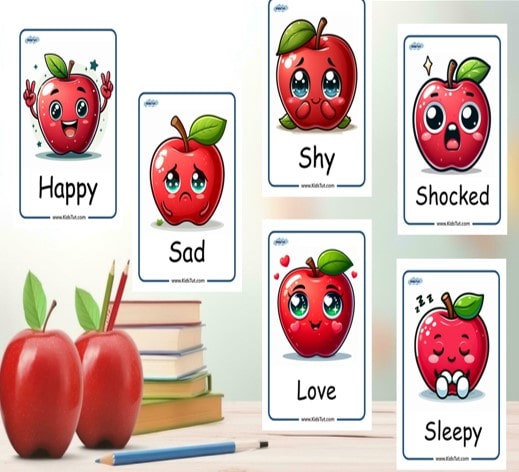Get free printable flashcards for kindergarten and help your kids learn about emotions with cute apple-themed cards in a fun way! So, teach your kids about emotions with these adorable Emotions flashcards.
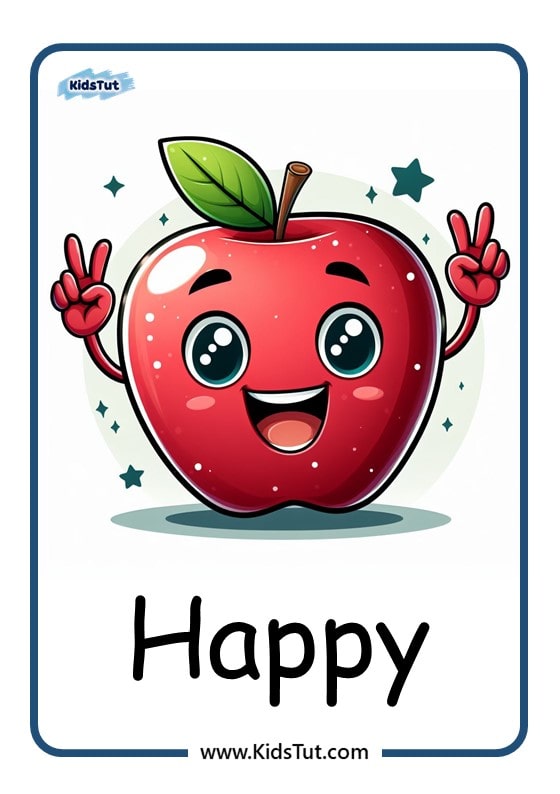
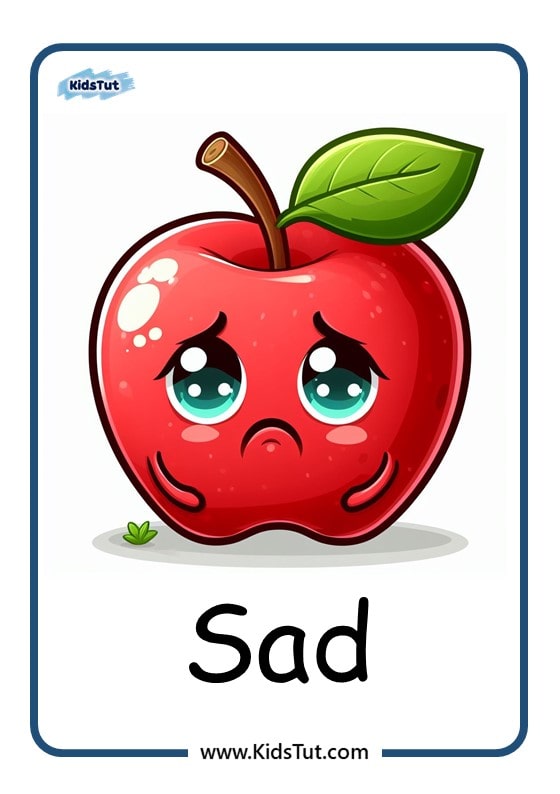
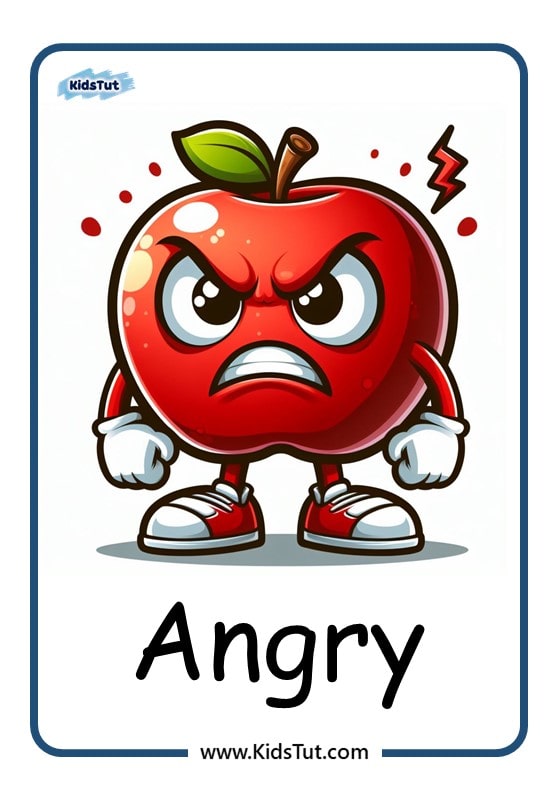
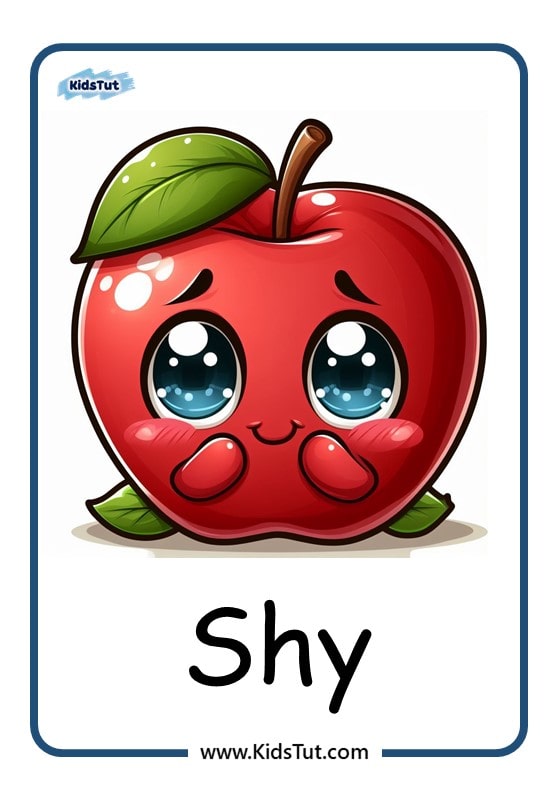
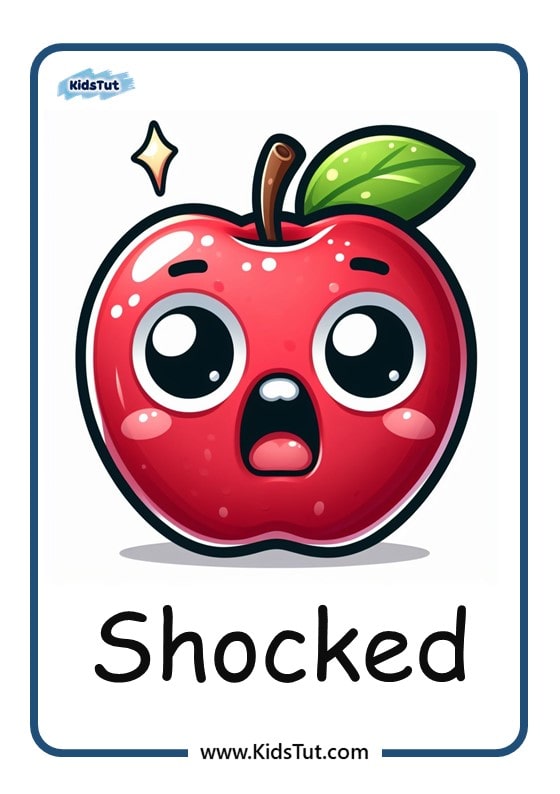
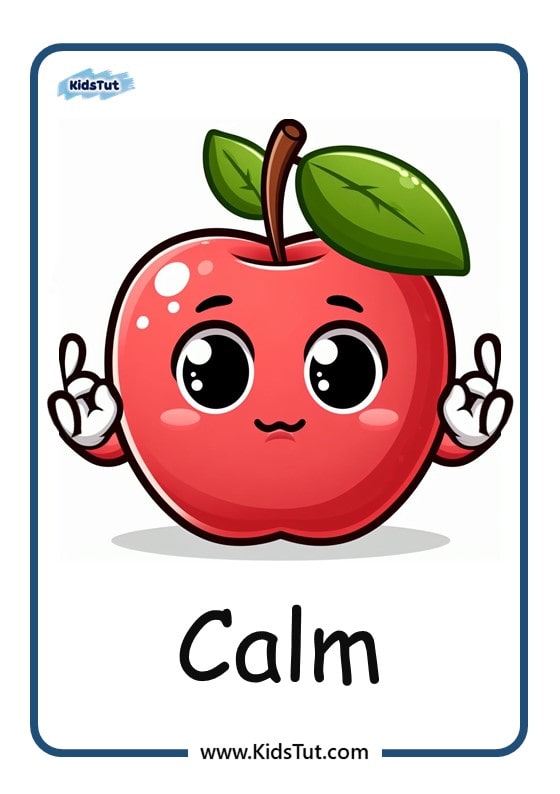
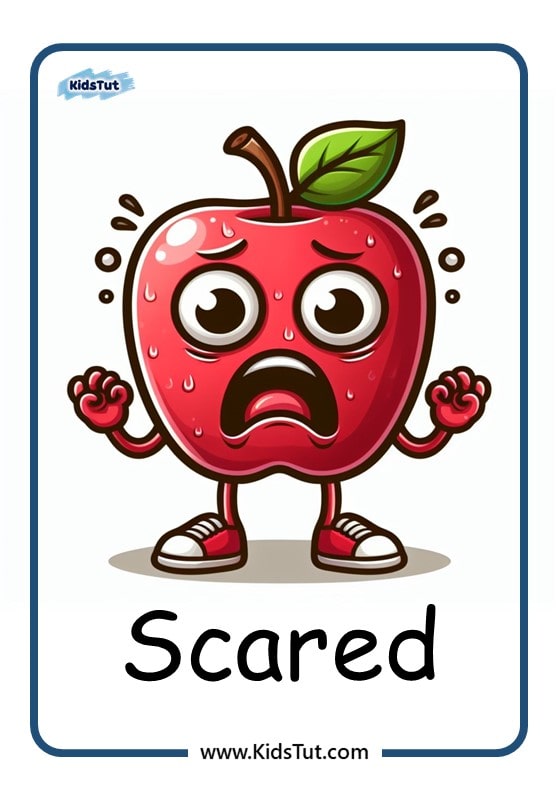
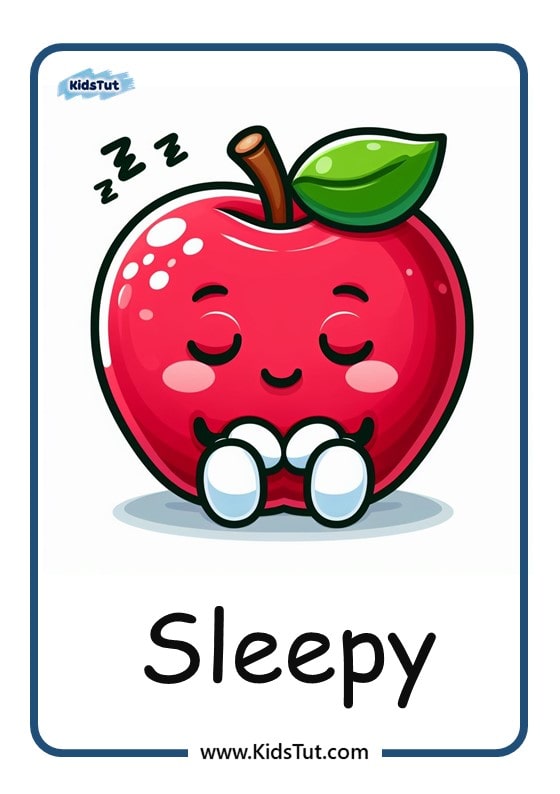

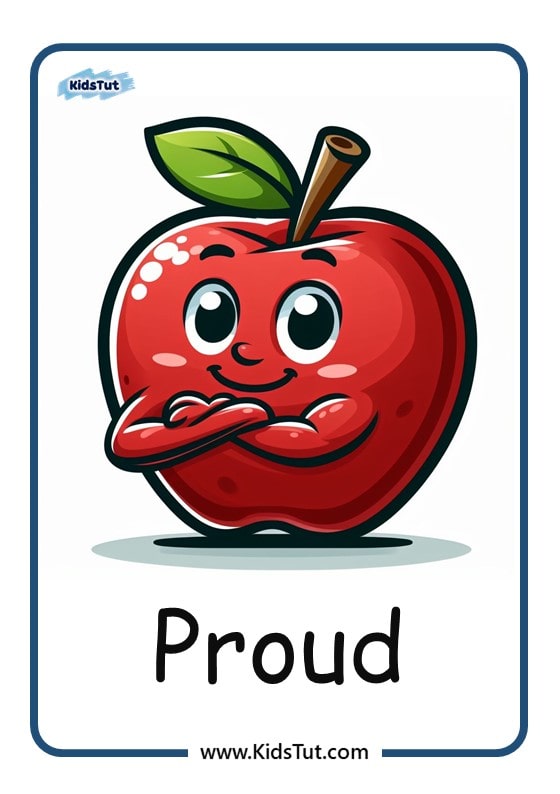


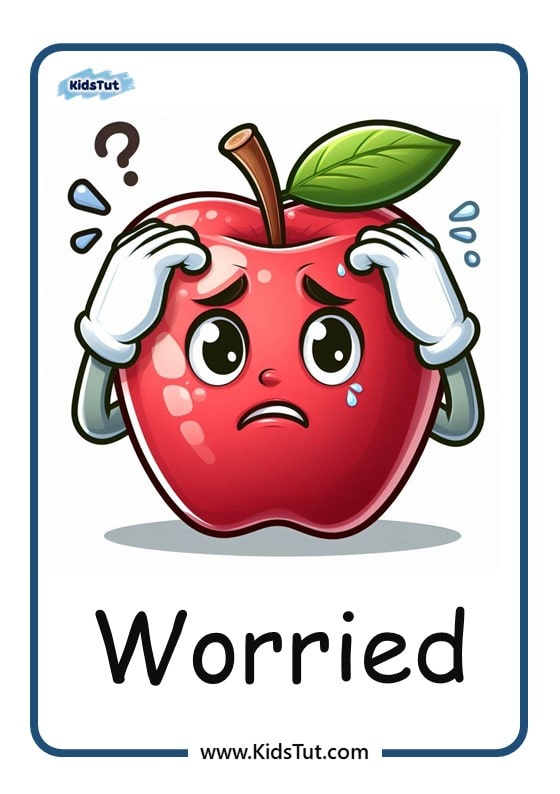
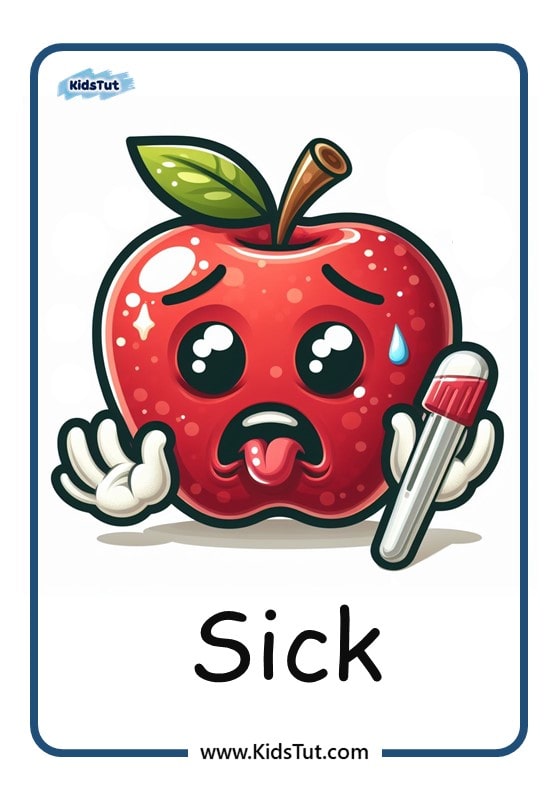
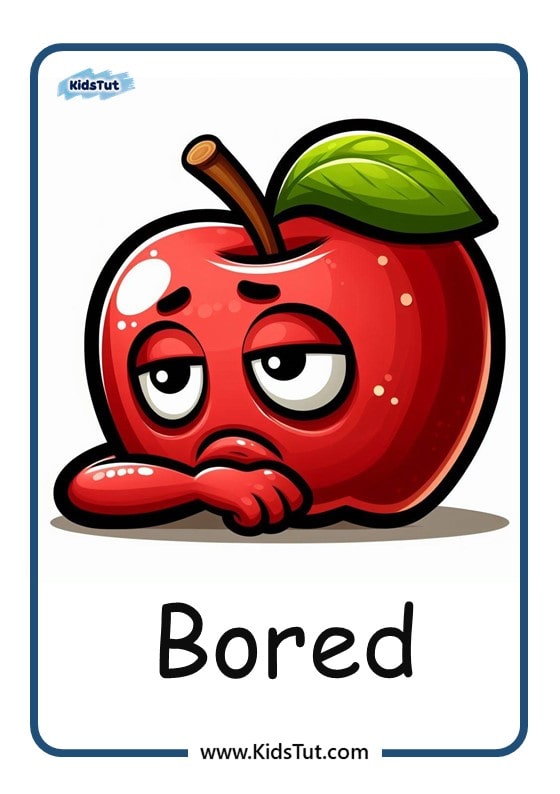

*** You have the option to download the PDF file from this location.- Download
Explore More Flashcards for Kids:
Pack of Simple Alphabet flashcards for kids – See More
50 Simple Action Verbs cards for kids – See More
By visiting this learning page, you can obtain 15 emotion cards designed for children. Children need to comprehend and express their feelings. The cards depict various emotions through pictures of children’s faces, all with an apple theme. This series not only effectively teaches children about emotions but also engages them with its apple-themed depictions.
Why is it important to teach children about feelings?
- Self-awareness: Understanding emotions helps children identify and label what they are feeling. This self-awareness is critical to their emotional development, enabling them to identify their feelings accurately.
- Emotional regulation: Once children can identify their emotions, they can learn strategies to regulate them effectively. This skill is vital for managing stress, coping with challenges, and maintaining mental well-being.
- Social Skills: Understanding emotions helps children navigate social interactions more effectively. They can empathize with others, understand different perspectives, and communicate their feelings.
- Problem Solving: Being able to recognize and understand emotions improves children’s problem-solving abilities. It enables them to approach conflicts and challenges with a clear mind and find appropriate solutions.
- Social skills: Understanding emotions helps children navigate social interactions more effectively. They can empathize with others, understand different perspectives, and communicate their feelings.
What are the emotional teaching methods for children?
- Storytelling: Using stories, books, or movies with characters experiencing and coping with different emotions can help children understand and relate to different emotions. After reading or watching, discussing the characters’ emotions and how they handle them can deepen children’s understanding.
- Emotion recognition activities: Engaging children in activities that involve recognizing and labeling emotions can be helpful. This could include using flash cards with different facial expressions, playing with emotions, or creating emotion wheels where children can indicate how they feel.
- Art and Creativity: Artistic activities such as drawing, painting, or sculpting can provide a non-verbal outlet for children to express their feelings. Encouraging them to create artwork that reflects how they feel can facilitate conversations about feelings.
- Role-playing: Role-playing situations that involve different emotional states help children practice recognizing and responding to emotions in a safe and supportive environment. This can be done by pretending with dolls, stuffed animals, or other children.
- Emotion-focused games: There are many board games and online resources specifically designed to teach children about emotions in a fun and interactive way. These games often involve emotional challenges such as matching facial expressions, exploring empathy, or solving problems.
Although all these feelings arise naturally in us, it is very important to teach children how to control some of these feelings. Emotions like happiness, love, calm, etc., are emotions that we should experience often. Tell them that having good emotions often leads to a good lifestyle. Teach children how to control negative emotions such as anger, boredom, worry, tiredness, hurt, and scared, and simple strategies for that. Explain to the children that such feelings are harmful to our lives. As an adult, you will be able to build a beautiful future full of beautiful feelings. 😊
